Mainland Bimble - Russian Bay

|
Mainland Bimble in Russian Bay
 We headed to the
beach opposite Beez Neez.
 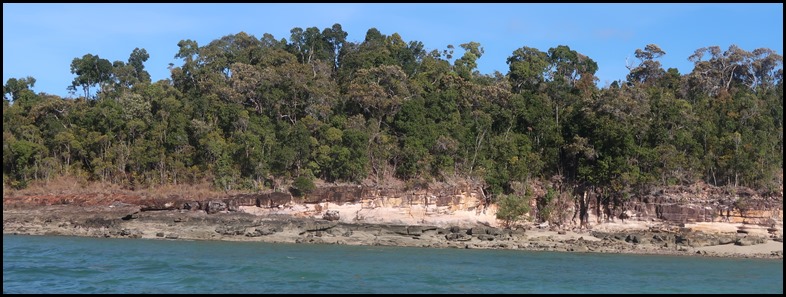  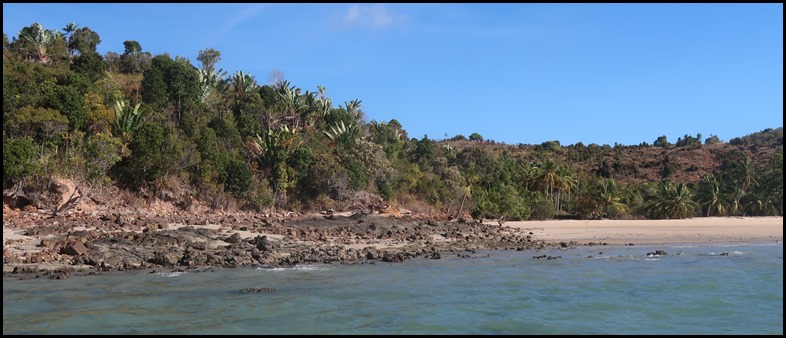 Very rugged
and then we saw a place to land Baby Beez.
 A huge
beach.
 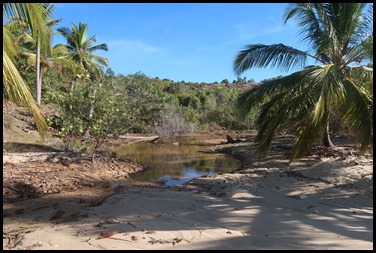 The first time our feet have touched on mainland
Madagascar........ Balls of sand but we didn’t see any of the
crabs responsible at work. beyond the beach a waterhole.
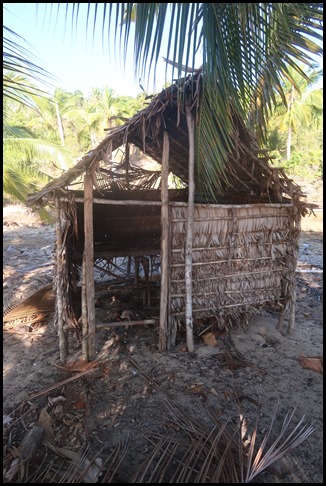 A once carefully owned hut.
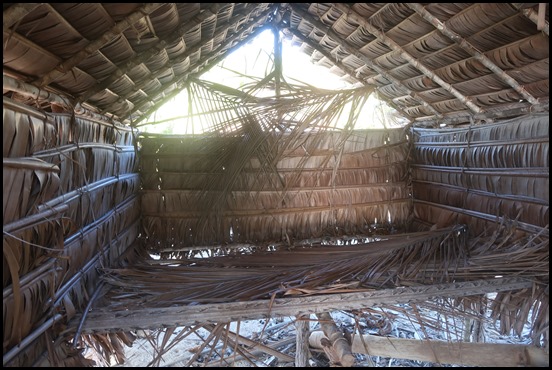 The little bed
area, ventilation above.
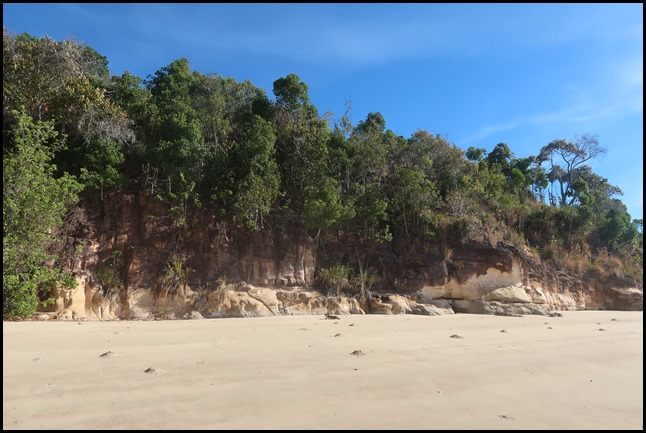 We bimbled along
the beach.
 A dog
appeared but every so often lay down in submission before jumping up,
running a little way and repeating the drop. So hope he is looked
after.
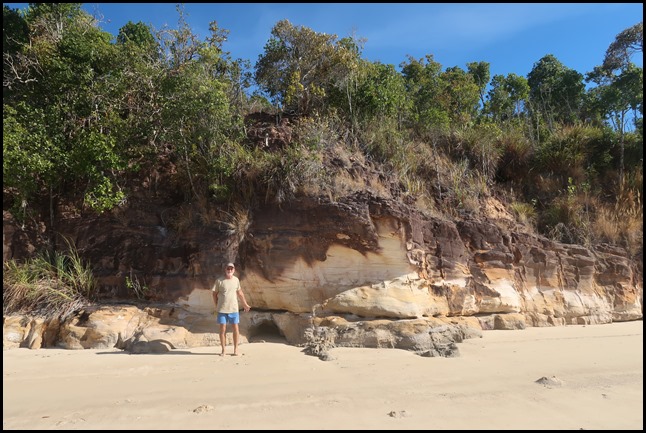 Wind-shaped
rocks.
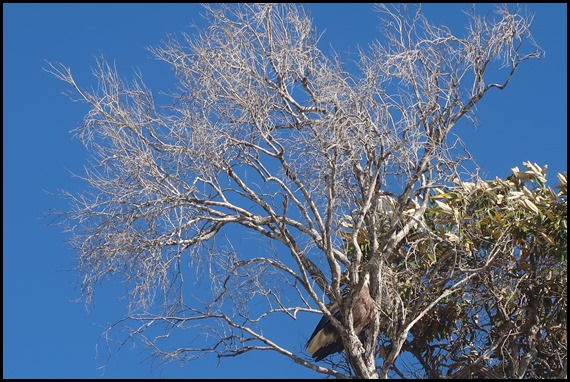 The tide was coming in and as
Baby Beez was just beginning to float, we bimbled back. I looked up at
a barren tree and nearly missed the huge bird
standing in the lower, slightly right of centre part of the picture.
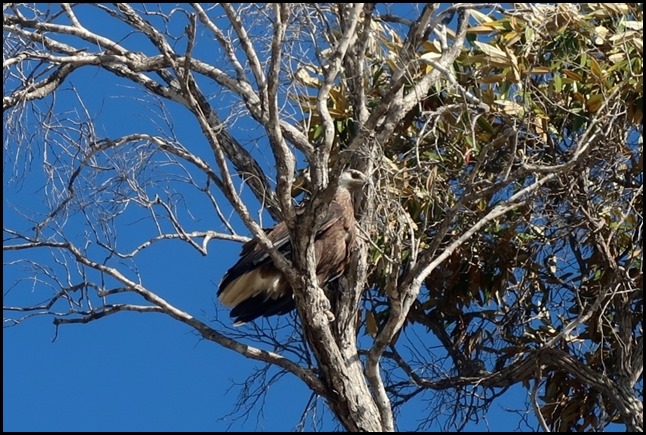 Not so clear with the point-and-shoot
but very pleased to see this chap as he was so very
camouflaged. Must get the big camera out as there are
so many creatures here that live nowhere else. Well, as it happens, I looked him
up when we had the internet off Sakatia Island. He only happens to be one of the
world’s rarest birds........The Madagascar Sea Eagle, a pair is known to live in
Russian Bay.
Edge of Existence says:This species is part of the genus Haliaeetus is thought to be one of the oldest living, avian genera, with some fossil evidence suggesting it was present in the Oligocene, 33.9 million to 23 million years. The closest relative of the Madagascar Fish-eagle is the African fish-eagle, Haliaeetus vocifer, and together they form a pair lineage distinct from other members of the genus. This pair diverged soon after the separation of the genus from the rest of the Accipitridae family. Research has shown that reproductive output in this species is low as typically, one or two eggs are laid and only one offspring is raised, as the strongest chick tends to kill the weakest (siblicide). This species mainly feeds on fish, therefore putting it into direct competition with the Malagasy fishermen. This has led to the persecution of this species through the taking of nests, shooting of adults but also the accidental entanglement in fishing-nests. Deforestation, soil erosion and the development of wetland areas for rice-paddies is causing the on-going loss of nesting and foraging habitat. There is an ongoing conservation programme with the aim to increase the known breeding population to at least 250 pairs. Activities include the enforcement of existing traditional laws at the local community level and also the release of captive-reared birds rescued from siblicide. Their range has now become part of a protected area. Wiki says in its review of Status: Total population estimates from the United Nations and from Grambo place the world population of this species at about 40 breeding pairs; according to Grambo this bird may be one of the rarest birds on Earth. Other surveys between 1991 and 1995 recorded at least 222 adults from 105 sites, with an estimated 98 breeding pairs. The main threats to its breeding habitat are deforestation, soil erosion and the development of wetland areas for rice paddies. It is also in direct competition with humans for fish stocks. Because of its decline in numbers and the threats it faces, the International Union for Conservation of Nature has assessed the bird's conservation status as being “critically endangered”. (On the IUCN Red List) So wow, how lucky we were to see this chap at all. 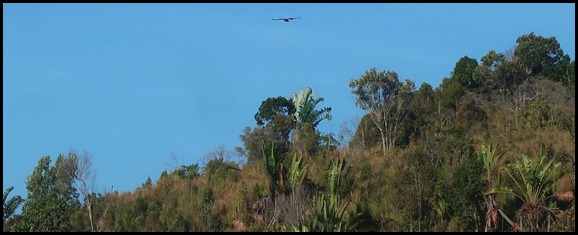 Off he went to
patrol his patch.
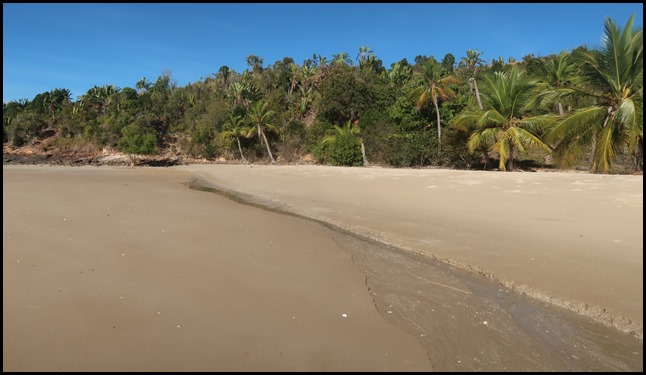 Back across the
sand........
Copied from our East Africa Pilot:
“There are may stories about how the bay got its name, but this is the one
we like most. It concerns the crew of the Vlotny, a Russian warship
that in 1905 had been sent to fight the Russo-Japanese war. The mostly Uralian
crew only needed one sight of life in Madagascar to realise they they did not
want to go back to Uralia, even if they did win the war. They had barely
organised a mutiny before their officers gave in, having seen more than the crew
of the attractive Madagascan girls.
The ship was hidden in the
reaches of Russian Bay, and twice emerged to pirate trading vessels in the
Mozambique Channel before they ran out of coke for the boilers. The Russians
were quickly decimated by malaria and other diseases, but those who survived
settled in Andassy Be, building a large Uralian-style dormitory, the ruins of
which remain today. They quickly adapted to their surroundings, living by
fishing and trading parts of the ship, but were never accepted by the local
Malagasy, and stayed fairly isolated in their little community. The last of the
crew died in 1936, and it is said that parts of the ship can still, be seen at
low tide. Must ask the locals where........
 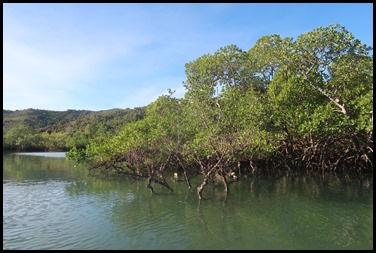 We spuddled to our side of the bay and
saw the opening to an area of
mangrove.
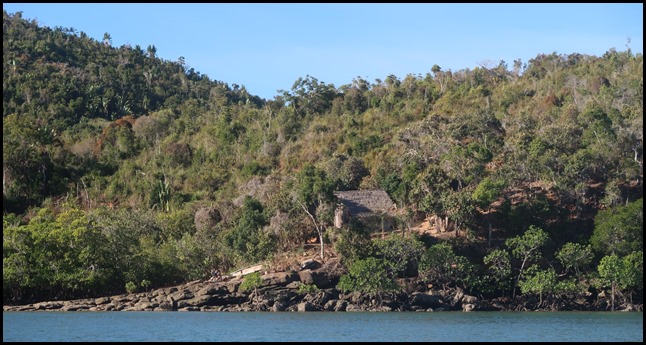 To our right a little homestead, chicken at the rear, ladies sitting on
the natural boat ramp.
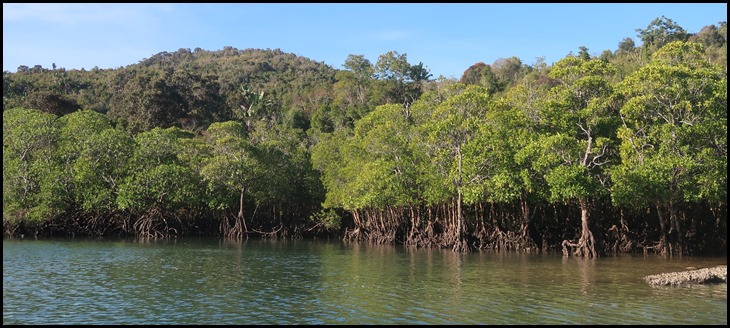 At the bottom of the boat ramp – the mangrove.
 In the middle of
the mangrove we looked back toward Russian Bay.
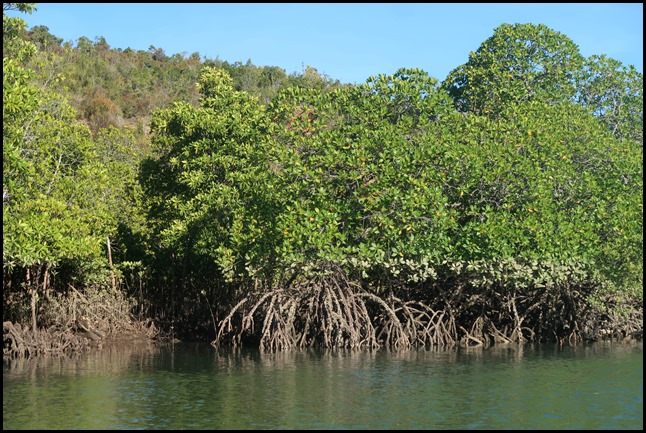 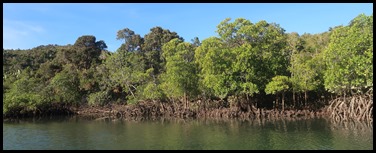 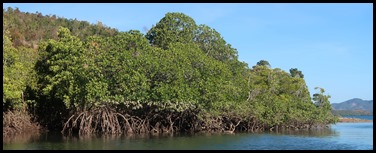 It seems such a long time since we
spuddled in a mangrove – no crabs
though.
 As we left the mangrove we waved at
the ladies about their work.
 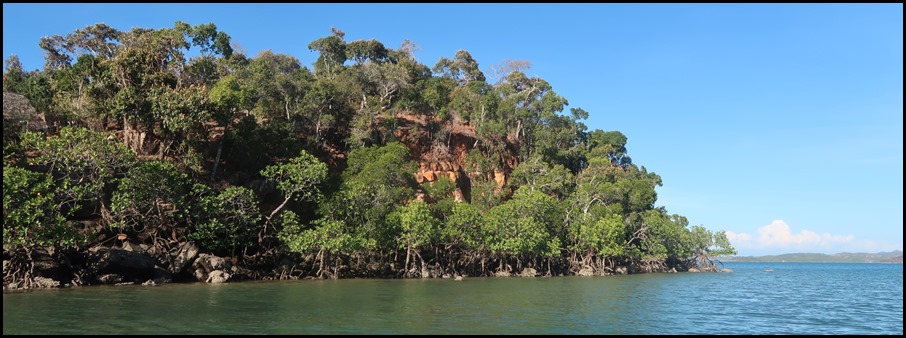 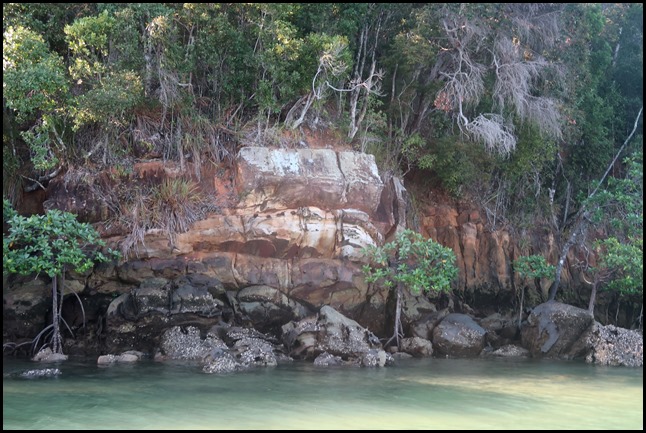 A sheer and
rocky bit before returning to the
anchorage.
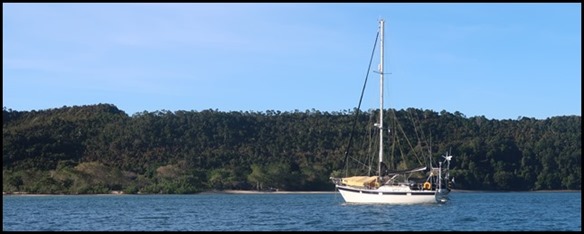 Back to Beez.
  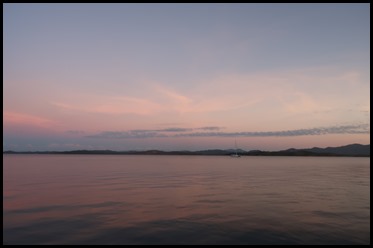  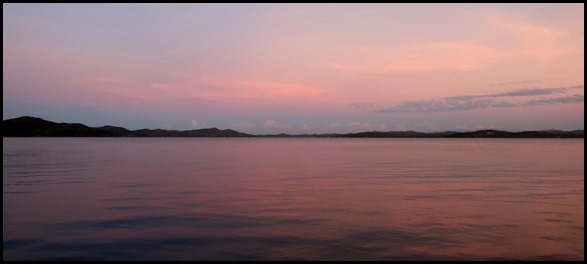 A very pink
sunset.
ALL IN ALL SO MUCH TO SEE AND
EXPERIENCE
WONDERFUL TO BE EXPLORING ONCE
MORE |